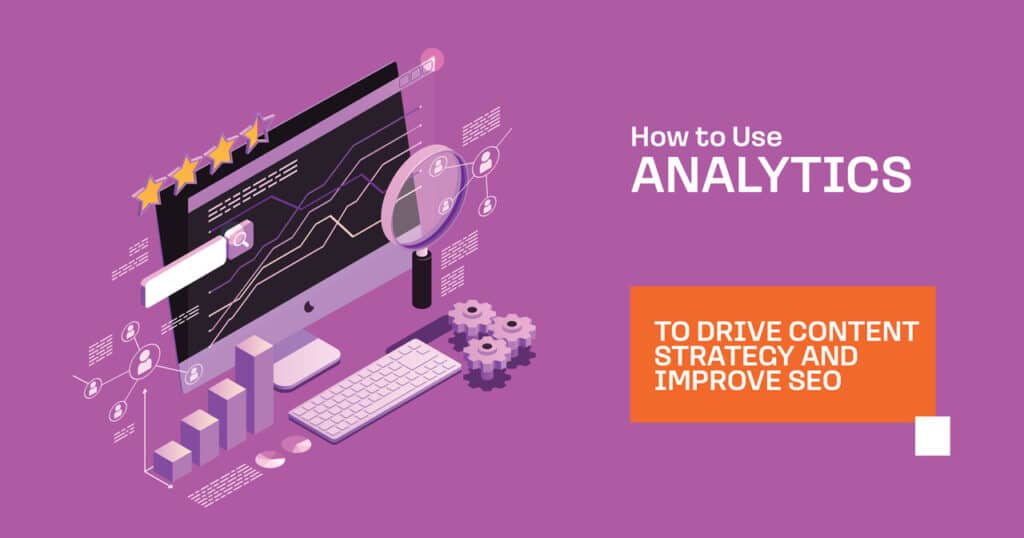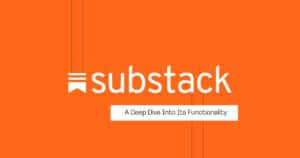In today’s digital landscape, where competition is fierce and user expectations are high, leveraging data is no longer optional—it’s essential. Analytics tools can provide valuable insights into how well your content is performing and guide you in crafting a content strategy that not only attracts but also engages your target audience. With tools like Google Analytics and Google Search Console, you can refine your approach to SEO strategies and improve your overall marketing efforts.
Essential Takeaways
- Data-Driven Content Strategy: Use analytics to craft effective content. Key metrics like organic traffic, bounce rate, and conversion rates help you tailor content to engage your audience and boost SEO performance.
- Keyword Research and Optimization: Identify and use relevant keywords with tools like Google Keyword Planner and SEMrush. This makes your content more discoverable and relevant to your audience’s search queries.
- Ongoing Monitoring and Adaptation: Regularly review analytics and stay updated with industry trends. This helps you adapt your content strategy and SEO campaigns to maintain high performance and achieve sustained success.
But how exactly do you use analytics to drive your content strategy and boost your SEO efforts? Let’s dive in!

The Importance of Analytics in Content Strategy
Why Data-Driven Decisions Matter
In the ever-evolving world of digital marketing, making data-driven decisions is crucial. Analytics provide concrete evidence of what’s working and what isn’t, allowing you to refine your content strategy for better results. By relying on data rather than intuition alone, you can make informed decisions that align with your audience’s preferences and needs, which ultimately leads to more effective content. Using tools like Google Analytics 4 can further enhance your data-driven approach.
How Analytics Connect to SEO Performance
SEO and content strategy are closely intertwined. Good content drives organic search traffic, while strong SEO ensures that your content is discoverable by search engines. Analytics bridge the gap between these two by helping you understand which aspects of your content are contributing to higher search rankings and which areas need improvement. By analyzing data, you can enhance both your content quality and SEO analytics practices.
Understanding Key Metrics
Essential Analytics Metrics for Content Strategy
To effectively use analytics, you need to be familiar with the key metrics that indicate how your content is performing. Here’s a breakdown of the most important metrics and what they can reveal about your content’s effectiveness.
Organic Traffic Definition and Significance
Organic traffic refers to visitors who arrive at your site through unpaid search results. It’s a crucial metric because it shows how well your content is performing in search engine results pages (SERPs). More organic traffic typically means better visibility and more effective SEO strategies.

How to Measure It Using Tools
Google Analytics is the primary tool for tracking organic traffic. Navigate to the Acquisition section, then select “All Traffic” and “Channels.” Here, you can see the amount of traffic coming from organic search and assess how different marketing channels contribute to your organic performance.
Bounce Rate What It Indicates About User Engagement
Bounce rate is the percentage of visitors who leave your site after viewing only one page. A high bounce rate can signal that your content isn’t engaging or relevant enough to your audience. It’s an important metric for understanding user engagement and content effectiveness.
Strategies to Reduce Bounce Rate
To reduce bounce rate, focus on improving the quality and relevance of your content. Make sure your headlines and meta descriptions accurately reflect the content on your page. Additionally, enhance user experience by improving average load speed and ensuring your site is mobile-friendly, particularly on mobile devices.
Average Session Duration Importance for Content Effectiveness
Average session duration measures how long visitors stay on your site. A longer session duration typically indicates that users find your content engaging and valuable. This metric is vital for assessing how well your content holds the audience’s attention and for determining average time spent on your site.
Methods to Increase Session Duration
To increase session duration, create high-quality, engaging content that encourages users to explore more pages. Use internal links to guide visitors to related content and offer interactive elements like quizzes or videos to keep users engaged. Additionally, you can analyze SEO reports to identify what types of content lead to longer sessions.
Conversion Rate Connection to Content Effectiveness
Conversion rate refers to the percentage of visitors who take a desired action, such as making a purchase or signing up for a newsletter. It’s a direct measure of how well your content drives user actions and achieves your business goals.
Ways to Track and Improve Conversions
Track conversions using Google Analytics by setting up goals in the “Conversions” section. To improve conversion rates, ensure your content has clear calls to action (CTAs) and provides value to your audience. Test different CTAs and content formats to see what resonates best with your users, focusing on conversion goals that align with your SEO goals.
Leveraging Analytics for Content Planning
Using Analytics to Inform Content Creation
Analytics can be a powerful tool for guiding your content creation process. Here’s how to use data to plan and produce content that resonates with your audience.
Identifying Popular Topics and Keywords Tools for Keyword Research
Keyword research tools like Google Keyword Planner, SEMrush, and Ahrefs can help you discover what topics and target keywords your audience is searching for. Use these tools to find high-traffic keywords relevant to your niche and incorporate them into your content strategy.
Analyzing Content Performance to Guide New Topics
Review your existing content’s performance in Google Analytics. Identify which topics are generating the most traffic and engagement. Use this data to guide your content planning and focus on areas that are already resonating with your audience, allowing you to make informed content creation decisions.
Understanding Audience Behavior
Utilizing Demographic and Behavior Data
Google Analytics provides demographic and behavior data that can help you understand who your audience is and how they interact with your content. This information can be used to tailor your content to better meet the needs and interests of your target audience.

Tailoring Content to Meet Audience Interests and Needs
Use insights from audience behavior data to create content that aligns with their preferences. For example, if your data shows that your audience prefers video content, consider incorporating more videos into your content strategy. This kind of customer journey analysis can enhance user engagement.
Competitor Analysis
Tools for Competitor Research
Competitor analysis tools like Ahrefs, Moz, and SEMrush can help you understand what’s working for your competitors. Analyze their content strategies to identify opportunities and gaps that you can exploit to improve your own content.
Learning from Competitors’ Content Strategies
Study your competitors’ high-performing content to learn what topics and formats are resonating with their audience. Use this information to refine your content strategy and find new ways to stand out in your niche, ensuring you leverage their SEO content audit insights to inform your approach.
Optimizing Content for SEO Based on Analytics
Data-Driven SEO Improvements
Using analytics to guide your SEO strategy can lead to significant improvements in search rankings and site visibility.
Content Gaps and Opportunities Identifying Gaps Using Analytics Tools
Analytics tools can help you identify gaps in your content by highlighting areas where your competitors are outperforming you or where there’s a lack of content coverage on your site. Use this data to create targeted content that fills these gaps and addresses user search intent.
Filling Gaps with Targeted Content
Develop content that addresses the identified gaps and meets the needs of your audience. This could involve creating new blog posts, updating existing content, or producing content on trending topics. Focus on high-volume search terms that align with your audience’s interests.
Enhancing On-Page SEO
Analyzing Keyword Performance
Review keyword rankings and performance data in Google Analytics to see how well your targeted keywords are performing. Adjust your content to focus on high-performing keywords and optimize for additional relevant terms, ensuring your content is well-optimized for search engine optimization.
Adjusting On-Page Elements
Optimize on-page elements such as titles, meta descriptions, and headers based on your keyword analysis. Ensure these elements are engaging and accurately reflect the content on the page, improving your click-through rate in search engine performance.
Tracking and Improving Page Performance
Using Page Speed and Performance Metrics
Page speed is a critical factor for both user experience and SEO. Use tools like PageSpeed Insights to analyze your site’s performance and identify areas for improvement.
Strategies for Optimizing Page Load Times
Improve page load times by optimizing images, reducing server response times, and minimizing JavaScript and CSS files. Regularly monitor your site’s performance to ensure it remains fast and responsive, keeping in mind that slow loading times can deter users.
Measuring the Success of Your Content Strategy
Assessing the Impact of Content on SEO
To determine the effectiveness of your content strategy, you need to assess its impact on SEO and overall performance.
Tracking Content ROI Methods to Calculate Return on Investment
Calculate the ROI of your content by comparing the costs of content creation with the revenue or conversions it generates. Use Google Analytics and other tools to track performance metrics and assess the financial impact of your content efforts.
Tools for ROI Tracking
In addition to Google Analytics, consider using HubSpot or Salesforce for comprehensive marketing and sales tracking, allowing you to evaluate the true value of your content.
Refining Your Strategy
Continuous Improvement Based on Data
Use insights from your analytics data to continuously refine your content strategy. Regularly review your metrics and adjust your approach based on what’s working and what isn’t, ensuring you stay aligned with audience preferences and SEO standards.
Implementing a Feedback Loop
Create a feedback loop by regularly reviewing performance metrics and audience feedback. This iterative approach ensures you adapt to changing trends and audience needs, ultimately leading to more effective content and SEO optimization.
Conclusion
In conclusion, leveraging analytics is vital for crafting a successful content strategy that enhances SEO performance. By focusing on key metrics, understanding audience behavior, and continuously refining your approach, you can create content that not only engages your audience but also drives SEO results. In a world where content is king, those who harness the power of data will reign supreme.
Call to Action
Ready to take your content strategy and SEO to the next level? Start using analytics tools today to gain valuable insights and drive your content efforts. Explore the recommended tools, dive into your data, and watch your website’s performance soar!
By following these guidelines and using the right tools, you’ll be well on your way to mastering content strategy and SEO through the power of analytics. Happy analyzing!
FAQs
1. What are the most important analytics metrics for improving content strategy?
The most important metrics include organic traffic, bounce rate, average session duration, conversion rate, and keyword performance. These metrics help you understand how well your content is performing, how engaged your audience is, and how effectively your content drives user actions.
2. How can I use Google Analytics to improve my SEO?
Google Analytics provides insights into traffic sources, user behavior, and conversion metrics. By analyzing these data points, you can identify high-performing content, discover traffic patterns, and optimize your SEO strategies accordingly. Focus on metrics like organic traffic, bounce rate, and average session duration to refine your SEO approach.
3. What tools can help with keyword research and content optimization?
Tools like Google Keyword Planner, SEMrush, Ahrefs, and Moz are excellent for keyword research and content optimization. They provide data on keyword performance, search volume, and competition, helping you choose the right keywords and optimize your content for better search visibility.
4. How often should I review my analytics data?
It’s important to review your analytics data regularly to stay on top of your content’s performance. Weekly or monthly reviews are generally recommended. This helps you identify trends, track progress, and make timely adjustments to your content strategy and SEO practices.
5. How can I reduce bounce rate and improve user engagement?
To reduce bounce rate, focus on creating high-quality, relevant content that meets your audience’s needs. Improve page load times, use clear and compelling headlines, and enhance the overall user experience with intuitive navigation and engaging multimedia elements. Internal linking can also help keep users on your site longer.









